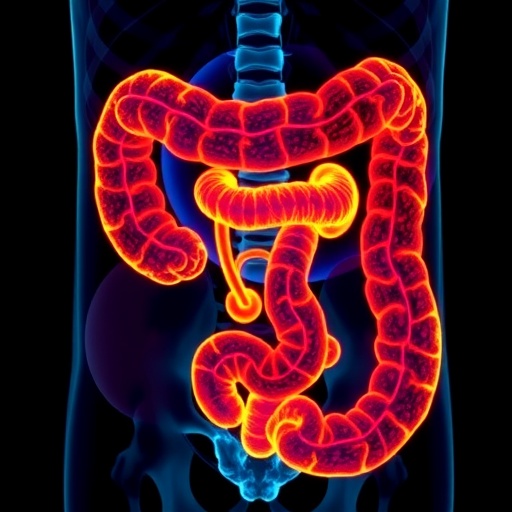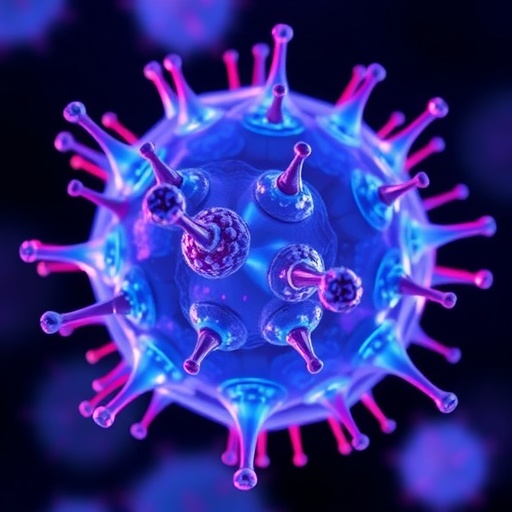Colorectal cancer (CRC) stands as one of the most prevalent and deadly malignancies globally, accounting for a substantial portion of cancer-related mortality. A persistent challenge in combating this disease stems from the difficulty in detecting it at early stages when treatment outcomes are most favorable. Even with the widespread adoption of colonoscopy as a gold standard screening tool, clinicians frequently encounter obstacles in immediately distinguishing benign polyps from potentially malignant or precancerous lesions during the procedure. This diagnostic ambiguity often leads to unnecessary biopsies or delayed interventions, impacting patient prognosis and healthcare efficiency. In a breakthrough development, an interdisciplinary team led by researchers at the Champalimaud Foundation in Portugal has unveiled a sophisticated optical imaging technique that leverages autofluorescence lifetime measurements combined with artificial intelligence to enhance real-time identification of colorectal malignancies.
The core innovation lies in the use of label-free imaging based on the intrinsic autofluorescence properties of human tissue. Autofluorescence refers to the natural emission of light by biological structures when excited by specific wavelengths, obviating the need for external dyes or contrast agents. What distinguishes this approach is its focus on measuring the fluorescence lifetime—the duration for which molecules emit light after excitation—rather than mere intensity. The fluorescence lifetime carries rich information related to the biochemical environment and molecular composition of tissues, thereby providing a nuanced portrait capable of revealing subtle pathological changes that conventional imaging might miss. By capturing these temporal emission patterns, the system can differentiate cancerous from non-cancerous tissues with remarkable sensitivity.
Technically, the researchers employed a dual-laser system that emits light at two discrete ultraviolet and visible wavelengths, specifically 375 nm and 445 nm. These wavelengths are adept at exciting endogenous fluorophores such as collagen and cellular coenzymes like NADH and FAD, which are pivotal metabolic markers within tissues. Their optical instrumentation featured a fiber-optic probe allowing precise spatial sampling of fresh tissue specimens. The system collected data across multiple spectral channels, logging the time-resolved fluorescence decay curves on each channel to construct a multidimensional optical signature for every examined site. This comprehensive spectroscopic dataset formed the foundation for subsequent machine learning analysis aimed at automated, high-fidelity tissue classification.
The study collected over a hundred fresh colorectal tissue samples from patients undergoing surgery, ensuring a broad representation of both benign and malignant lesions. These samples were meticulously scanned ex vivo to generate a robust training dataset that paired autofluorescence lifetime signatures with definitive pathological diagnoses. Using this dataset, the team trained an ensemble machine learning model based on Adaptive Boosting (AdaBoost). This algorithm iteratively emphasizes difficult-to-classify samples, building a strong classifier from a series of weaker predictors. The AdaBoost framework excelled at teasing out the complex nonlinear relationships within the fluorescence lifetime data and associating them with cancerous tissue states.
Performance metrics demonstrated impressive accuracy in both training and validation. The model achieved an 87% accuracy rate on the training cohort, coupled with a sensitivity of 83%, indicating a high true positive rate for cancer detection, and a specificity of 90%, reflecting robust true negative identification of benign tissues. Importantly, when applied to an independent test group of novel samples, accuracy remained consistently high at 85%, with sensitivity and specificity equilibrated at 85%, showcasing reliable generalizability of the approach beyond the initial dataset. These results signify a transformative capacity to identify malignant colorectal lesions with minimal false alarms or missed detections.
One of the system’s most promising clinical implications lies in its real-time capability during endoscopic procedures. Unlike conventional histopathology, which requires tissue excision and prolonged laboratory analysis, this technology could be integrated into colonoscopy or surgical workflows to provide instant feedback on tissue pathology. Even when measurements were confined to discrete microscopic points rather than extensive tissue regions, the model generated detailed probability maps that spatially highlighted suspicious tumor areas. Such mapping could empower clinicians to make informed, targeted decisions about lesion removal, biopsy, or further surveillance, potentially reducing procedural times and patient morbidity.
The researchers also explored whether the complexity of the imaging setup could be streamlined without compromising diagnostic precision. By selectively focusing on the most informative optical channels—those carrying dominant biochemical signals—the system retained strong classification performance. This reduction in technical complexity paves the way for the design of more affordable, compact, and user-friendly devices tailored for broad clinical deployment. Minimizing hardware requirements while sustaining accuracy is a crucial step toward scalable adoption in diversified healthcare environments.
Despite these promising advancements, the team recognizes that additional research is imperative to further refine the methodology. Enhancing the system’s sensitivity, especially for early-stage or borderline lesions where biochemical distinctions are subtler, remains a priority. Multicenter clinical trials encompassing larger and more heterogeneous patient populations will be essential to validate robustness and reproducibility across diverse demographics. Integrating these optical diagnostics with existing endoscopic technologies could significantly augment early colorectal cancer detection paradigms, ultimately improving patient outcomes and reducing healthcare burdens globally.
The synergy between label-free autofluorescence lifetime imaging and sophisticated ensemble learning algorithms heralds a new frontier in cancer diagnostics. This approach exemplifies the power of combining biophotonics with artificial intelligence to unlock previously inaccessible biological information, thus pushing the boundaries of noninvasive medical imaging. Its application in colorectal cancer detection could serve as a blueprint for similar strategies in other malignancies where real-time tissue characterization is critical. By harnessing endogenous molecular signatures without exogenous agents, the technology aligns well with the increasing demand for minimally invasive, rapid diagnostic tools.
This groundbreaking study, recently published in the journal Biophotonics Discovery, represents a decisive step towards integrating AI-driven optical diagnostics into routine clinical practice for colorectal cancer. The method’s potential to reduce unnecessary biopsies, optimize surgical resections, and expedite clinical decision-making holds promise for transforming gastroenterological oncology care. As research progresses, the fusion of photonics, machine learning, and clinical medicine could soon deliver on the long-sought goal of highly accurate, rapid, and noninvasive cancer detection.
Such innovation underscores the broader trend of personalized medicine where diagnostic accuracy is enhanced by advanced technological interfaces, enabling tailored therapeutic approaches. Here, the fluorescence lifetime provides a sensitive biomarker reflecting the cellular metabolic state, redox balance, and extracellular matrix alterations—all hallmarks of neoplastic transformation. The automated interpretation through adaptive machine learning transcends human observational limitations, offering objective and reproducible diagnostics. Future development may integrate these tools with robotic endoscopes or augmented reality interfaces to visually guide clinicians in vivo.
Overall, this research illuminates a promising horizon for early colorectal cancer detection leveraging the quantum properties of light-matter interactions. It bridges fundamental biophotonics with clinical oncology and artificial intelligence to deliver innovative solutions addressing urgent unmet medical needs. With continued interdisciplinary collaboration and technological refinement, real-time autofluorescence lifetime imaging could become an indispensable component of colorectal cancer screening and management protocols worldwide.
Subject of Research: Human tissue samples
Article Title: Identification of colorectal malignancies enabled by phasor-based autofluorescence lifetime macroimaging and ensemble learning
News Publication Date: 4-Jul-2025
Web References: https://www.spiedigitallibrary.org/journals/biophotonics-discovery/volume-2/issue-03/032705/Identification-of-colorectal-malignancies-enabled-by-phasor-based-autofluorescence-lifetime/10.1117/1.BIOS.2.3.032705.full
References: J. L. Lagarto et al., “Identification of colorectal malignancies enabled by phasor-based autofluorescence lifetime macroimaging and ensemble learning,” Biophotonics Discovery 2(3), 032705 (2025), doi:10.1117/1.BIOS.2.3.032705
Image Credits: Image courtesy of J. Lagarto (Champalimaud Foundation)
Keywords: Cancer research, Biotechnology, Medical imaging, Data analysis
Tags: artificial intelligence in healthcareautofluorescence lifetime measurementsbenign vs malignant polypscancer screening advancementscolonoscopy challengescolorectal cancer detectionearly cancer diagnosisinnovative cancer diagnostic methodsinterdisciplinary research in oncologylabel-free imaging technologiesoptical imaging techniquespatient prognosis improvement





